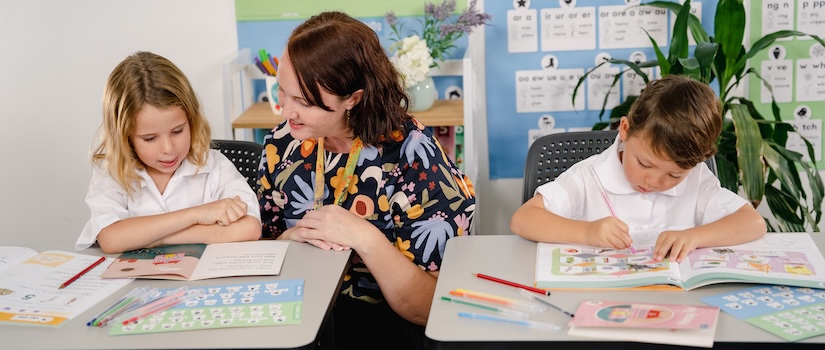Articles & Videos
Sound Waves Literacy and the Reading Commitment
Categories
Subscribe to our newsletters
Receive teaching resources and tips, exclusive special offers, useful product information and more!
Sound Waves Literacy and the Reading Commitment
Sound Waves Literacy 30/5/24

For educators all over Australia, improving students’ reading outcomes is a shared goal. So, no matter what state or territory you’re based in, the Queensland Reading Commitment is essential reading for its invaluable, evidence-informed insights and recommendations about how schools can improve reading outcomes.
What is the Queensland Reading Commitment?
When the Queensland Government announced its Reading Commitment in late 2023, it sent a clear and strong message to schools, teachers and parents about its goal to significantly improve reading outcomes for all students. It committed to achieving this through a consistent evidence-informed approach to the teaching of reading in Queensland schools. To assist with implementation, it has promised additional staff, ongoing support, updated teacher training and funding.
The Queensland Reading Commitment mandates that every school in the state will approach reading instruction in the same way:
- following evidence-informed practices
- teaching synthetic phonics systematically and explicitly
- introducing beginning readers to decodable texts
- assessing students’ decoding skills.
The new Reading Commitment is based on current multi-disciplinary research in fields including education, psychology and linguistics. The Queensland Government pressed the importance of teaching reading in its Reading Position Statement, stating ‘Reading is the process of decoding and making meaning from text. Unlike speaking and listening, reading is not a naturally developing skill — all students need to be explicitly taught to read.’
Importantly, the policy reinforces that Balanced Literacy and Whole Language approaches are no longer considered acceptable methods for teaching reading.
How can Sound Waves Literacy help schools implement systematic synthetic phonics to meet the Reading Commitment?
Sound Waves has been a trusted favourite in Australian primary schools for more than 20 years.
Across those two decades, Sound Waves has championed a systematic synthetic phonics approach to spelling and integrated phonemic awareness, synthetic phonics, morphology and etymology. Its structured literacy method serves as the cornerstone for reading, writing and spelling success, in alignment with the Science of Reading. Continuously refined through evidence from peer-reviewed research, it stands as an informed and evolving program – its latest improvements include new high-quality early years reading resources.
Schools adopting Sound Waves for literacy instruction gain access to a comprehensive toolkit for evidence-based, whole-school, explicit, systematic teaching. This enables them to deliver high-quality lessons, assessments and remediation. Additionally, educators receive free, ongoing support and professional learning workshops from experienced local education consultants.
Teachers benefit from a wealth of resources, including a detailed Scope and Sequence, Curriculum Match documents, engaging slideshows for each lesson and an array of extras such as printable resources, games and teaching tips. The Decodable Readers for Foundation and Year 1 are available in three levels of difficulty (Support, Core and Extended). The program also includes assessment tools with remediation activities for immediate intervention.
Let’s dig a little deeper into the latest reading resources that the program includes. Due to the symbiotic relationship between reading and spelling, the Sound Waves Decodable Readers were crafted to follow the Sound Waves Scope and Sequence. After explicit instruction on phoneme–grapheme relationships, students use the Decodable Readers to practise reading and enhance their word recognition skills, expression, fluency and motivation. All these elements are fundamental to successful reading.
While the Reading Commitment focuses on starting strong in the early years, it identifies that schools should build on these strong foundations throughout primary school years. With this in mind, a notable feature of Sound Waves Literacy is its whole-school approach, structured around the ‘I do, we do, you do’ method. Foundation is different to the other year levels and teaches phoneme–grapheme relationships in a carefully controlled sequence to reflect the specialised instruction required in the first year of school. In Years 1–6, the same sequence of phonemes is taught across all year levels, however as the years progress the focus shifts to cover more complex phoneme–grapheme relationships, while also building students’ morphological awareness and etymological knowledge.
Want to know more?
Book a free professional learning workshop to find out more about Sound Waves Literacy resources and how they can help you achieve your reading commitment goals.
The professional learning workshops are run by a highly experienced and knowledgeable team of education consultants, who are former classroom teachers, curriculum leaders, intervention teachers and principals.
Request a workshop for your school or register for one of our virtual workshops.